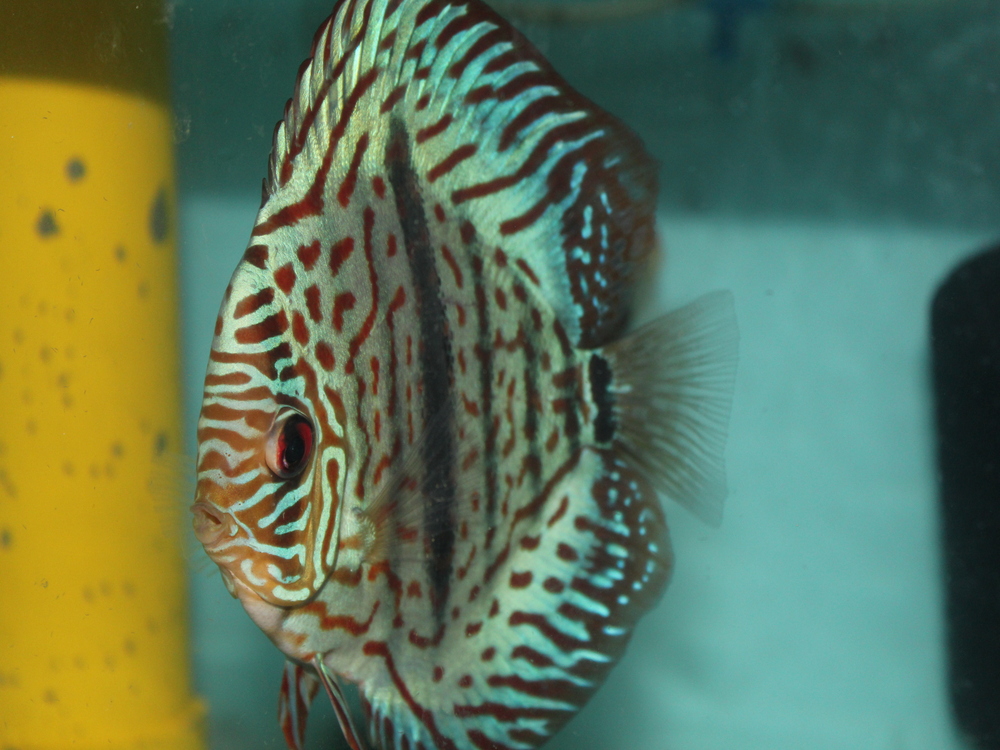Heckel Discus (Symphysodon discus) are an exquisite and highly prized species of freshwater fish that captivate aquarists and fish enthusiasts alike. Native to the Amazon River basin in South America, Heckel Discus is celebrated for its striking beauty and majestic presence in aquariums around the world. Renowned for their distinctive color patterns, Heckel Discus showcase vibrant hues of blue, green, and red, embellished with intricate markings that make each individual fish a unique masterpiece. Their round and laterally compressed body shape, paired with flowing fins, adds to their graceful appearance, creating a mesmerizing display of elegance in any aquarium setting. Known for their peaceful and gentle nature, Heckel Discus are a joy to observe as they gracefully glide through the water, exuding a sense of tranquility and harmony. Their captivating charm and stunning aesthetics have made them a popular choice among seasoned aquarists and newcomers alike, creating an enduring fascination and admiration for these regal fish.
Breeding Steps

Selecting Healthy Breeding Stock
Begin with selecting healthy and mature Discus for breeding. Choose individuals with vibrant colors, well-defined patterns, and robust body structures. A proper breeding pair should display compatibility and engage in courtship behaviors.
Condition the Breeding Pair
Before spawning, condition the breeding pair by providing a nutritious and varied diet. Offer high-quality Discus pellets, frozen or live foods such as bloodworms, brine shrimp, and daphnia. Introduce vitamin and mineral supplements to enhance their overall health and breeding readiness.
Creating a Suitable Breeding Environment
Set up a dedicated breeding tank or use a spawning cone in your main aquarium. Maintain soft and slightly acidic water conditions, with a pH around 6.0 to 6.5 and a temperature between 82°F to 86°F (28°C to 30°C). Ensure excellent water quality by performing regular water changes and using efficient filtration.
Inducing Spawning Behavior
Simulate the natural breeding conditions by increasing the water temperature and providing dim lighting. Perform partial water changes to mimic the rainy season, which can stimulate spawning behavior in Discus.
Observing Courtship and Egg-Laying
Watch for courtship behaviors, such as head nodding, fin flaring, and side-by-side swimming. The female will lay her eggs on a suitable surface, often on a vertical substrate or the side of a cone. The male will then fertilize the eggs.
Caring for the Eggs and Fry
After spawning, leave the parents to care for the eggs. Ensure that the water remains clean and stable during this crucial period. The parents will fan the eggs to provide oxygen and protect them from fungal infections. Once the fry hatch, they will continue to feed on the mucus secreted by their parents.
Raising the Fry
As the fry becomes free-swimming, feed them with powdered or liquid fry food. Provide several small meals throughout the day to support their growth and development. Frequent water changes are essential to maintain pristine water conditions and remove waste.


